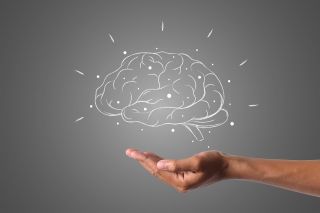How to Unlock Learning to Enhance Mental Wellness. Understanding the brain's learning processes can fortify mental resilience. Reviewed by Devon Frye

KEY POINTS-
- Leveraging the neural pathways responsible for learning can support our mental wellness.
- Active cognitive reappraisal can reshape emotional responses and bolster positive thinking.
- Building mental resilience through learning can help us effectively cope with adversity.

The complex relationship between learning and mental health could hold the key to our holistic well-being, a notion brought to life in a recent dialogue with a curious high school student keen on psychology. She expressed her concerns regarding the widespread anxiety her peers face around exams, painting a vivid picture of the mind’s cascade into self-doubt and fear of disappointment at the prospect of poor performance.
“The mind spirals,” she reflected, “thinking a failed test means failed intelligence, leading to embarrassment and the feeling of wasted efforts in the eyes of our loved ones.” Intrigued, she probed into the subtle yet deeply intertwined connection between the neuroscience of learning and mental health.
Our mental well-being is inherently associated with our perceptions, emotions, and responses—elements rooted in learned behaviors and conditioned reactions to internal and external stimuli. Understanding the connection between learning and mental wellness can empower us to build mental resilience.
The Neuroscience of Learning
When we delve into learning something new, whether playing a musical instrument or the quadratic formula, our brain forms new connections between neurons, called synapses. This process is underpinned by the principle “cells that fire together, wire together,” implying that consistent activation of specific neural patterns strengthens the connections between neurons, making learned behaviors or information more accessible and easier to execute.
Regions like the hippocampus, prefrontal cortex, and amygdala each play critical roles in learning, managing our memories, decision-making, attention, and emotions respectively. Neurotransmitters like dopamine act as rewarding agents and reinforce behavior, which are integral for forming memory and learning. This ability of the brain to adapt and reconfigure its connections is termed neuroplasticity or synaptic plasticity.
Mental Health and Learning: A Symbiotic Relationship
Our emotions are often reflections of our learned behaviors and conditioned responses to stimuli. For example, the nervousness one feels before a test is a conditioned response, a body’s learned reflex to a perceived stressful situation.
However, the marvel of our brain is its ability to rewire and reshape connections. The feelings of stress associated with tests can be transformed into feelings of excitement and opportunity by repeatedly aligning thoughts with positive associations. The repeated practice of positive thinking can modify the body’s response to similar situations, seeing them not as stressful but as stimulating and invigorating.
How to Shape Mental Wellness Through Learning
We can apply these principles of learning to psychology and use them to improve our mental well-being in three steps:
- Cognitive Reappraisal: Actively reframing negative thoughts and focusing on the positive can alter emotional responses and reinforce positive neural pathways.
- Positive Reinforcement: Rewarding oneself for breaking a negative thought loop can reinforce the new, positive neural pathway, making it easier to follow in the future.
- Building Resilience: Cultivating resilience through positive thought patterns can assist in coping with adversities and maintaining mental well-being.
Lisa Damour, a psychologist and author specializing in teenage mental health, emphasizes that being mentally healthy isn’t about constant happiness but about having appropriate emotional responses and the ability to manage them effectively. It is about awareness, resilience, and management of our emotions.
We can achieve mental well-being by understanding our emotional triggers and learning to manage them effectively. The process involves awareness of our triggers and responses and adopting healthy coping mechanisms such as maintaining a balanced diet, engaging in physical activities, fostering meaningful relationships, and practicing mindfulness.
The synergy between learning and mental health is profound. The brain’s extraordinary ability to adapt is crucial for acquiring new skills and knowledge and a foundational pillar for building mental resilience and wellness. Understanding the neuroscience of learning provides insights and tools to navigate life’s challenges with increased adaptability and resilience, enriching our mental wellness journey. By embracing the power and flexibility of our minds, we can reshape our world, fostering mental health and holistic well-being.
- Questions and Answers
- Opinion
- Story/Motivational/Inspiring
- Technology
- Art
- Causes
- Crafts
- Dance
- Drinks
- Film/Movie
- Fitness
- Food
- Spiele
- Gardening
- Health
- Home
- Literature
- Music
- Networking
- Other
- Party
- Religion
- Shopping
- Sports
- Theater
- Wellness
- News
- Culture
- War machines and policy

